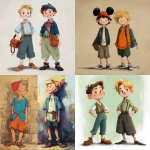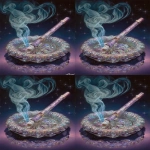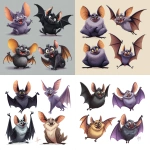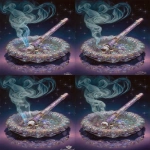Explore the Best AI Image Gallery

Beyond the Brush: How SaaS Solutions are Empowering Creative Industries
The creative landscape is undergoing a profound transformation, driven by the rise of Software as a Service (SaaS) solutions. These cloud-based platforms are revolutionizing how artists, designers, and businesses operate, offering unprecedented access to tools, resources, and collaborative opportunities.
From streamlining workflows to fostering global connections, SaaS is empowering creatives across diverse disciplines. Lets explore the multifaceted impact of SaaS on the creative industry, its potential applications, ethical considerations, and future trends.
Unlocking Creative Potential with SaaS
SaaS solutions are providing creatives with a suite of tools that enhance productivity, efficiency, and innovation:
- Project Management & Collaboration: Platforms like Asana, Monday.com, and Trello facilitate seamless project management, enabling teams to track progress, assign tasks, and communicate effectively, regardless of location.
- Design & Creative Tools: Adobe Creative Cloud, Figma, and Canva offer powerful design software accessible from any device, empowering creatives to conceptualize, design, and execute projects with ease.
- Content Creation & Marketing: SaaS tools like Mailchimp, Hootsuite, and HubSpot streamline content marketing efforts, allowing creatives to create engaging content, manage social media channels, and analyze campaign performance.
- E-commerce & Sales: Platforms like Shopify and Squarespace enable creatives to establish online storefronts, sell their creations directly to consumers, and manage sales transactions efficiently.
SaaS: A Catalyst for Innovation
Beyond streamlining workflows, SaaS is fostering innovation by:
- Democratizing Access to Tools: Affordable subscription models make sophisticated creative tools accessible to a wider range of individuals and businesses.
- Fostering Collaboration & Knowledge Sharing: Online platforms connect creatives from diverse backgrounds, facilitating collaboration, knowledge exchange, and the emergence of new ideas.
- Enabling Emerging Technologies: SaaS provides the infrastructure for integrating emerging technologies like artificial intelligence (AI) and augmented reality (AR) into creative workflows, opening up exciting possibilities for innovation.
Ethical Considerations in the SaaS Landscape
As with any powerful technology, its crucial to consider the ethical implications of SaaS within the creative industry:
- Data Privacy & Security: Ensuring the secure storage and responsible handling of user data is paramount.
- Accessibility & Inclusivity: SaaS platforms should be designed to be accessible to individuals with disabilities, promoting inclusivity within the creative community.
- Intellectual Property Rights: Establishing clear guidelines for ownership and usage rights of content created using SaaS tools is essential.
- Algorithmic Bias: Mitigating potential biases in AI-powered tools used in creative workflows is crucial to ensure fairness and equity.
The Future of SaaS in Creative Industries
SaaS is poised to continue shaping the future of creative industries in profound ways:
- Hyper-Personalized Experiences: AI-powered personalization will enable creatives to deliver tailored experiences to individual users, fostering deeper engagement and connection.
- Immersive & Interactive Creations: AR and VR technologies integrated with SaaS platforms will empower creatives to develop immersive and interactive experiences that blur the lines between physical and digital worlds.
- Decentralized Creative Ecosystems: Blockchain technology will enable decentralized creative marketplaces, empowering artists to directly connect with their audiences and control the distribution of their work.
As SaaS continues to evolve, its essential for creatives, businesses, and policymakers to collaborate in shaping its ethical development and ensuring that it empowers individuals, fosters innovation, and enriches our collective cultural landscape.

](https://images.ai-img.art/thumbnails/150/269414b0e541026702e9e67c67602c96162f37ff460a388b3b36314c8fc936dd.webp)





](https://images.ai-img.art/thumbnails/150/3020b8c2b6d9be07e042357107af1de10deb274a41d2b0f332684ad4b532a702.webp)

](https://images.ai-img.art/thumbnails/150/5197af8969d850e2a43e141d41e482ccbceedebceb2a4caf9f098f943f9d1b0f.webp)



















](https://images.ai-img.art/thumbnails/150/2fbd98ecfc425cfc1597779121e1c0305437067779e9c471eb64ff9615d5be98.webp)

](https://images.ai-img.art/thumbnails/150/8d1fe5a7a49cfc96747182431a853357913286d89258383caab2d3b4681afcb5.webp)
















](https://images.ai-img.art/thumbnails/150/485c8b1c747827bdc9a962f8a1919b3c259b18dd263b260208a1eae19fb85e07.webp)
